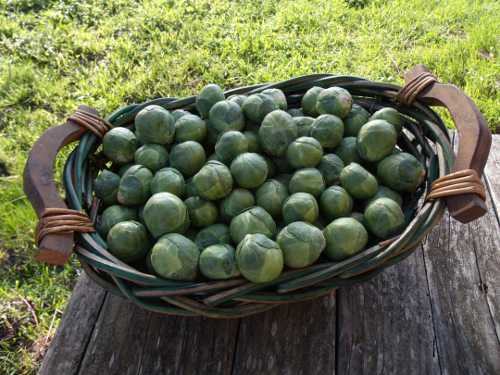- Lake County News reports
- Posted On
STATE: Department of Water Resources reduces State Water Project allocation
The California Department of Water Resources (DWR) on Wednesday reduced its estimate of the amount of water the State Water Project will deliver this year.
DWR dropped its projected delivery total, or allocation, from 60 percent to 50 percent of the requested amount of slightly more than 4 million acre-feet.
“Stubbornly dry conditions this winter give us no choice but to roll back our water supply estimate,” said DWR Director Mark Cowin. “We continue to hope, however, that wetter conditions in the remaining winter weeks will allow us to boost deliveries back up.”
DWR noted that precipitation so far this winter has been only about half of normal and the mountain snowpack is less than a third of normal.
Water Year (Oct. 1-Sept. 30) runoff from rain and snow is forecasted to be far below average in both the Sacramento River and San Joaquin River systems.
The median runoff forecast of 9.4 million acre-feet for the Sacramento River system would be the 16th driest in 106 years.
The February 1 median water year runoff forecast of 3.2 million acre-feet for the San Joaquin River system would be the 21st driest in 111 years.
Average runoff is 18.3 million acre-feet for the Sacramento system, and 5.9 million acre-feet for the San Joaquin.
Much of California’s water comes from the mountainous country from Shasta Lake in the north to the American River basin in the south.
DWR’s eight precipitation gages covering this area recorded an impressive 130 percent of average rainfall and snow in October, but only 43 percent in November, four percent of average in December, 84 percent of average in January, and 18 percent of a normal February total to date this month.
Overall, this “Eight-Station Index” area to date is at 51percent of its seasonal precipitation average. Records go back to 1920.
Similarly, precipitation gages in the San Joaquin basin recorded 125 percent of the average monthly precipitation for October, 32 percent for November, zero percent for December, 80 percent for January, and 20 percent of a normal February to date.
This “San Joaquin Five-Station Index” to date is at 47 percent of its seasonal average. San Joaquin Basin records go back to 1904.
Initial State Water Project allocations have seldom been reduced. Previous times were in 2001 (from 40 percent to a final allocation of 39 percent of requests); 1991(85 percent to 30 percent), and 1977 (100 percent to 90 percent).
In 2000, the initial Allocation of 50 percent was increased to 100 percent, but finally dropped to 90 percent.
All allocations, or supply estimates, are conservative, based on factors including reservoir storage, pessimistic weather projections, and projected runoff into streams, reservoirs and aquifers.
Carryover reservoir storage from last winter remains high (110 percent of normal for the date), but a high pressure ridge this winter has diverted most storms to the north of California.
The Sierra snowpack graphically shows how California has been shortchanged this winter. Water content in the statewide snowpack is only 30 percent of normal for the date, a mere 25 percent of the average April 1 measurement, when the snowpack is normally at its peak before the spring runoff.
Mountain snow normally provides approximately one-third of the water used in California as it melts in spring and early summer.
The large differences in snowfall totals in the 2010-2011 snow season and thus far this season, demonstrate the variability that is possible in California’s precipitation and water storage.
Models of California’s future climate indicate that rain and snowfall is likely to become even less predictable. This variability makes it critically important that California continue to invest in water conservation and water recycling, as well as improve the flexibility and adaptability of our statewide water systems.
It is still possible – though statistically unlikely – that late-season storms could salvage the water year, similar to the “Miracle March” of 1991, which recorded three times that month’s average precipitation at the conclusion of an otherwise desperately dry winter in the fifth year of a drought.
The 50 percent State Water Project allocation announced today is not severely low. Last year, an unusually wet year, the final allocation was 80 percent of the slightly more than 4 million acre-feet requested by the 29 public agencies that distribute SWP water to more than 25 million Californians and nearly a million acres of irrigated farmland.
The final allocation was 50 percent in 2010, 40 percent in 2009, 35 percent in 2008, and 60 percent in 2007.
The last 100 percent allocation – difficult to achieve even in wet years because of fishery agency restrictions on Delta pumping to protect threatened and endangered fish – was in 2006.
Follow Lake County News on Twitter at http://twitter.com/LakeCoNews, on Tumblr at www.lakeconews.tumblr.com, on Google+, on Facebook at www.facebook.com/pages/Lake-County-News/143156775604?ref=mf and on YouTube at www.youtube.com/user/LakeCoNews .

 How to resolve AdBlock issue?
How to resolve AdBlock issue?  A tony Brooklyn newspaper says that 2012 is the year of the Brussels sprout, and I’m inclined to believe them.
A tony Brooklyn newspaper says that 2012 is the year of the Brussels sprout, and I’m inclined to believe them.





















